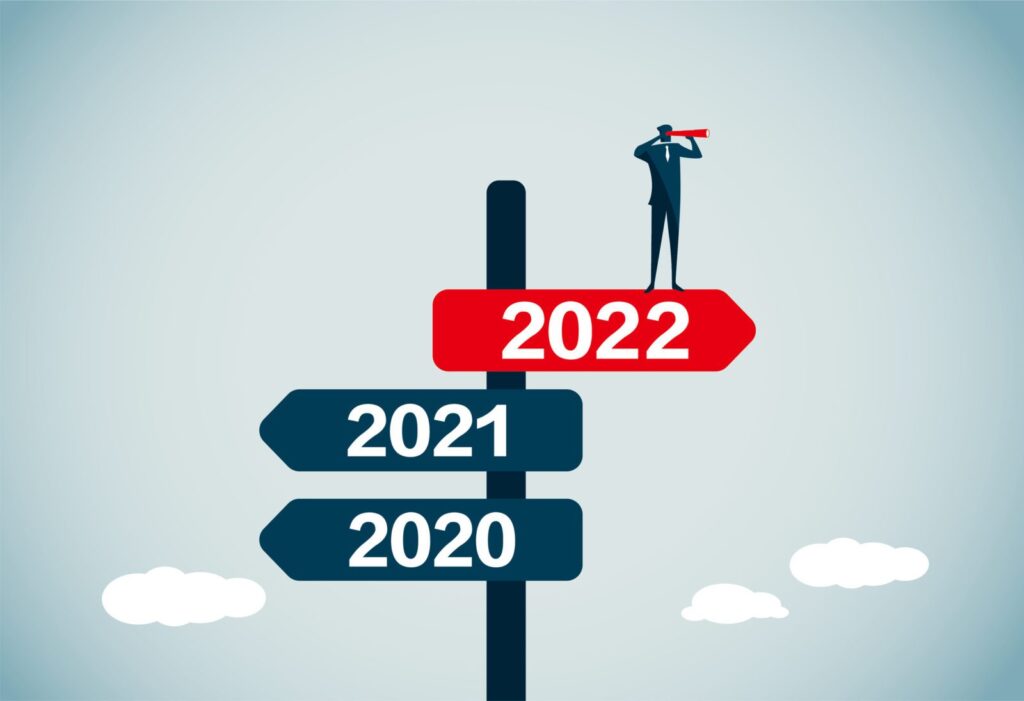
Healthcare consumers feel more empowered to weigh their options, share their opinions and expect more out of their healthcare experience—which is why many healthcare organizations are making 2022 the year they improve the consumer experience.
By Medecision
As we enter the third year of the COVID-19 pandemic, we can more clearly see how the pandemic has changed our day-to-day lives. In 2020, food delivery services such as Uber Eats, Postmates, Grubhub and DoorDash saw revenue rise $3 billion collectively in the second and third quarters of 2020. Instacart, the country’s leading grocery delivery app, saw significant growth as well, despite the inflated prices that come with ordering groceries online. Instead of meetings in a boardroom, employees now turn on webcams and microphones in at-home offices. And when it comes to healthcare, more than half of consumers say they “interact with the healthcare system differently today than they did before the pandemic began,” according to a November 2021 report from Carenet Health.
A recent report from Accenture states that “50% of global consumers say the pandemic has caused them to rethink their purpose and re-evaluate what is important in life.” Furthermore, Forrester Research predicts that in 2022, “consumers will turn to uplifting, pleasing products and experiences that offer reprieve from the fatigue of ongoing uncertainty.”
A Turning Point for the Healthcare Consumer Experience
Simply put, 2022 will be a year focused on improving the consumer experience—for all industries, but especially healthcare. Trust in the healthcare industry has been shaken by the pandemic—particularly among individuals who are Black, Asian, Hispanic and Native American. Though racial inequities and disparities have long been issues in healthcare, the pandemic has brought them to life. Misinformation and the emergence of “fake news” have led many individuals to doubt science, innovation and scientific institutions. The lack of transparency in the use of patient data and information can also cause a lack of trust in the industry. And when a patient has a negative experience with a provider, they often report feeling a lack of trust as a result.
This lack of trust in the healthcare system is one of the reasons Carenet Health predicts in its fourth annual Healthcare Consumer Engagement Forecast that 2022 will be a turning point for the healthcare consumer experience.
What Healthcare Consumers Want
As healthcare moves toward a value-based care payment model rather than a volume-based model, consumers feel more empowered to weigh their options, share their opinions and expect more out of their healthcare experience. In a Deloitte perspectives article about elevating the healthcare consumer experience, David Betts, leader for Public Health Transformation for Deloitte Counseling, highlights five things consumers look for in their healthcare interactions:
> Personalization: Healthcare isn’t a one-size-fits-all approach. A treatment that works for one person may not be beneficial for another—or patients may have the same condition with different symptoms. Consumers want their care teams and health plans to take their health concerns, lifestyle choices and health goals into consideration when deciding on treatment. Fortunately, the abundance of data and the available tools that connect the dots of data allow healthcare organizations to offer more personalized healthcare experiences.
> A seamless and efficient experience: Rarely do healthcare consumers care about the inner workings or logistics of a healthcare organization. What they want is a seamless experience where scheduling appointments is easier, handling insurance issues isn’t a headache, and ongoing communication about chronic conditions is more accessible. A 2020 survey from Redpoint Global found that 71% of consumers face major frustrations when dealing with healthcare organizations. In fact, more than half of consumers said they would rather endure jury duty or waiting at the DMV than deal with a health insurance issue.
> Timeliness: A 2018 study found a strong correlation between how long a patient has to wait and the Star rating of the healthcare facility. More recently, a 2021 survey revealed that 63% of respondents said they would choose a new healthcare provider if their provider made them consistently wait too long for appointments, and 33% said they would choose a new provider if they had to wait too long for just one appointment. However, many respondents said they would be fine with waiting longer if there was upfront communication and if they were receiving high-quality, personalized care from their provider.
> Transparency: The cost of healthcare services can vary—and even range dramatically depending on what hospital you visit and what region you’re in. In a 2020 presentation at the Center for Connected Medicine’s Top of Mind Summit, Phil McKoy, chief information officer at UnitedHealthcare, explained the importance of price transparency. He acknowledged that healthcare organizations need to “streamline our operations and make it easier for people to understand what they are paying for.” People want an experience “they can trust, understand and navigate,” he said.
> Security: The Department of Homeland Security considers healthcare data to be a top security target, partly because healthcare information systems collect such a broad amount of an individual’s data. However, “customers need to believe that everything they share with you will be safe and secure,” Deloitte’s Betts said. “They want to be confident that you have tight control over who accesses their most personal information.” In a 2019 blog post, Medecision’s own Brenton McKinney wrote that “organizations need an extremely responsive and effective security posture in place.” Managing threats and vulnerabilities is what he called “mission-critical.”
A Yearlong Goal—and Then Some
Improving the consumer experience isn’t a quick fix—it takes time, effort and buy-in from
C-suite executives and employees. “Effective customer-experience transformations require a clear vision and a customer-centric, ambitious articulation of goals,” said Tjark Freundt, a senior partner at McKinsey & Company, in a 2019 article.
A typical transformation can take two or three years, according to McKinsey & Company, and relies on employees to “sustain the continuous improvement necessary for success.” So don’t be discouraged if it takes longer than expected to transform the consumer experience.
For Further Reading
As your healthcare organization seeks to become more consumer-centric, refer back to these blog posts for more information about improving the consumer experience.
Consumer Experience: How Healthcare Ranks Among Other Industries—Health economist Jane Sarasohn-Kahn highlights how the consumer experience is becoming more important.
Improving the Consumer Experience: 3 Lessons for Healthcare—Sarasohn-Kahn shares what the healthcare industry can learn about improving the consumer experience from three other organizations.
Improve the Consumer Experience by Looking to Other Industries—What can healthcare learn from the entertainment, hospitality, financial planning and aviation industries?
Star Ratings and the Need to Improve Consumer Experience—We look at a game-changing revisions to CMS rules for Star ratings, which puts Medicare Advantage plans under extra pressure to deliver an excellent customer experience.
The Consumerism of Healthcare—What do today’s consumers want in a healthcare experience? Personal involvement is at the center of it all.
4 Organizations Improving Patient Experience—We take a look at four organizations and the efforts they are making to improve the overall experience.



About The Author: Medecision
Fully delivering on the promise of data — and making the business of healthcare simpler and more successful — Medecision offers a whole new world of possibilities. The company's flagship offering, Aerial™, stands as the market's most extensible clinical data platform. It offers complete contextual awareness of members and automates next best actions — simple campaigns, complex care management, utilization approvals, and more — for optimal health outcomes.
Aerial is not only quick to deploy, it is easy to manage. The platform's effectiveness in reducing both medical and administrative costs, coupled with its role in improving the member and patient experience, has made it the preferred choice for health plans and care delivery organizations. Presently, Aerial is instrumental in catering to over 10% of the U.S. population, marking a significant milestone in advancing healthcare efficiency and effectiveness.
More posts by Medecision